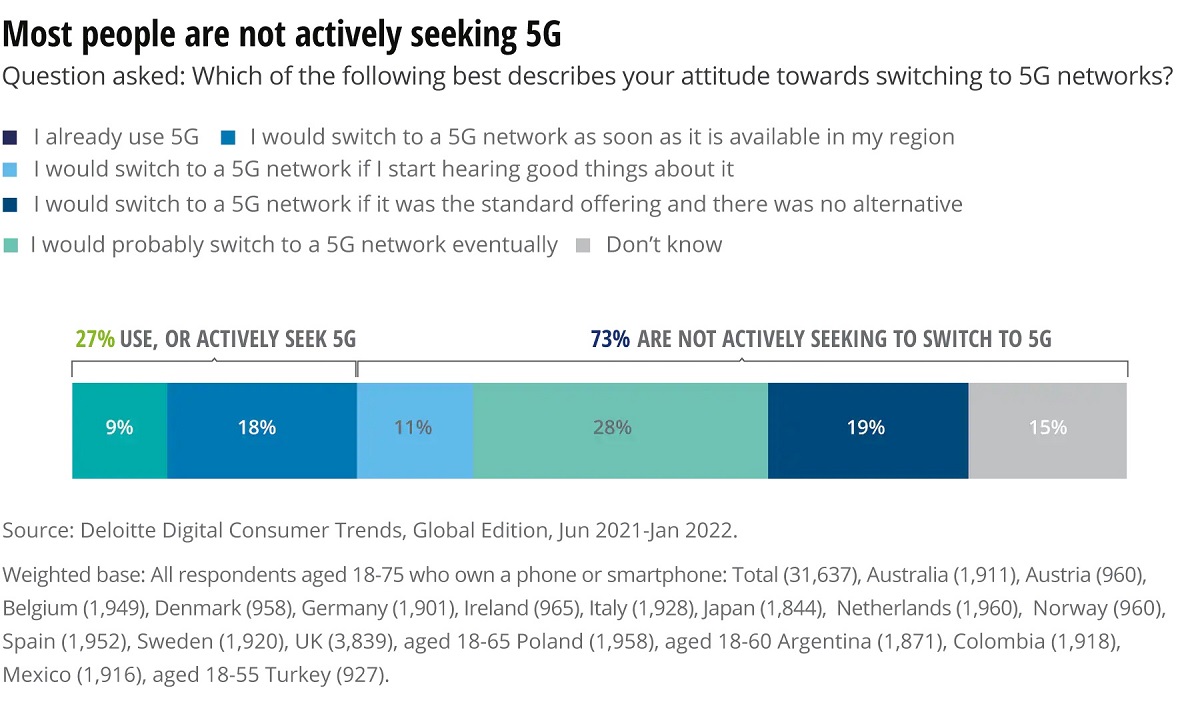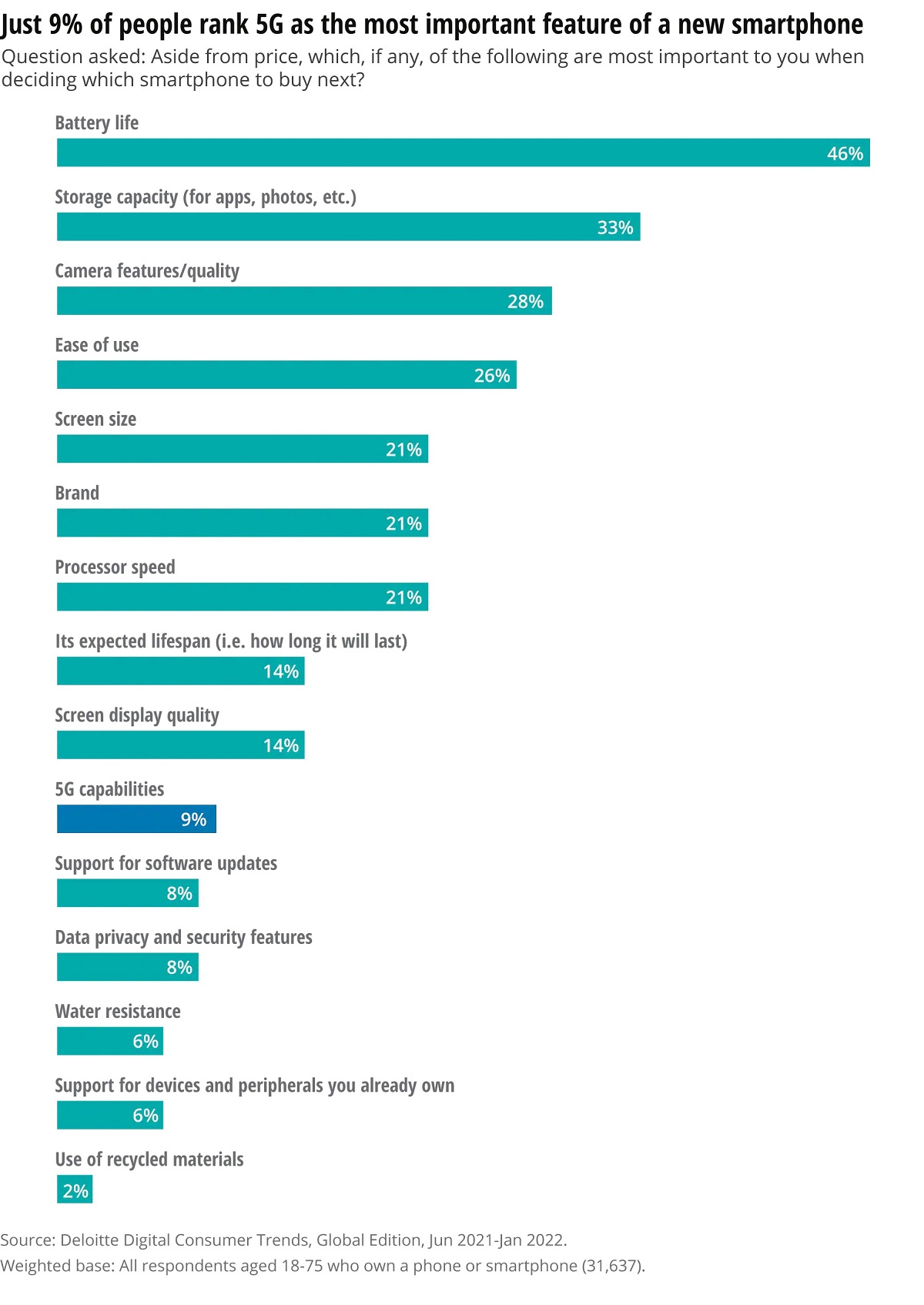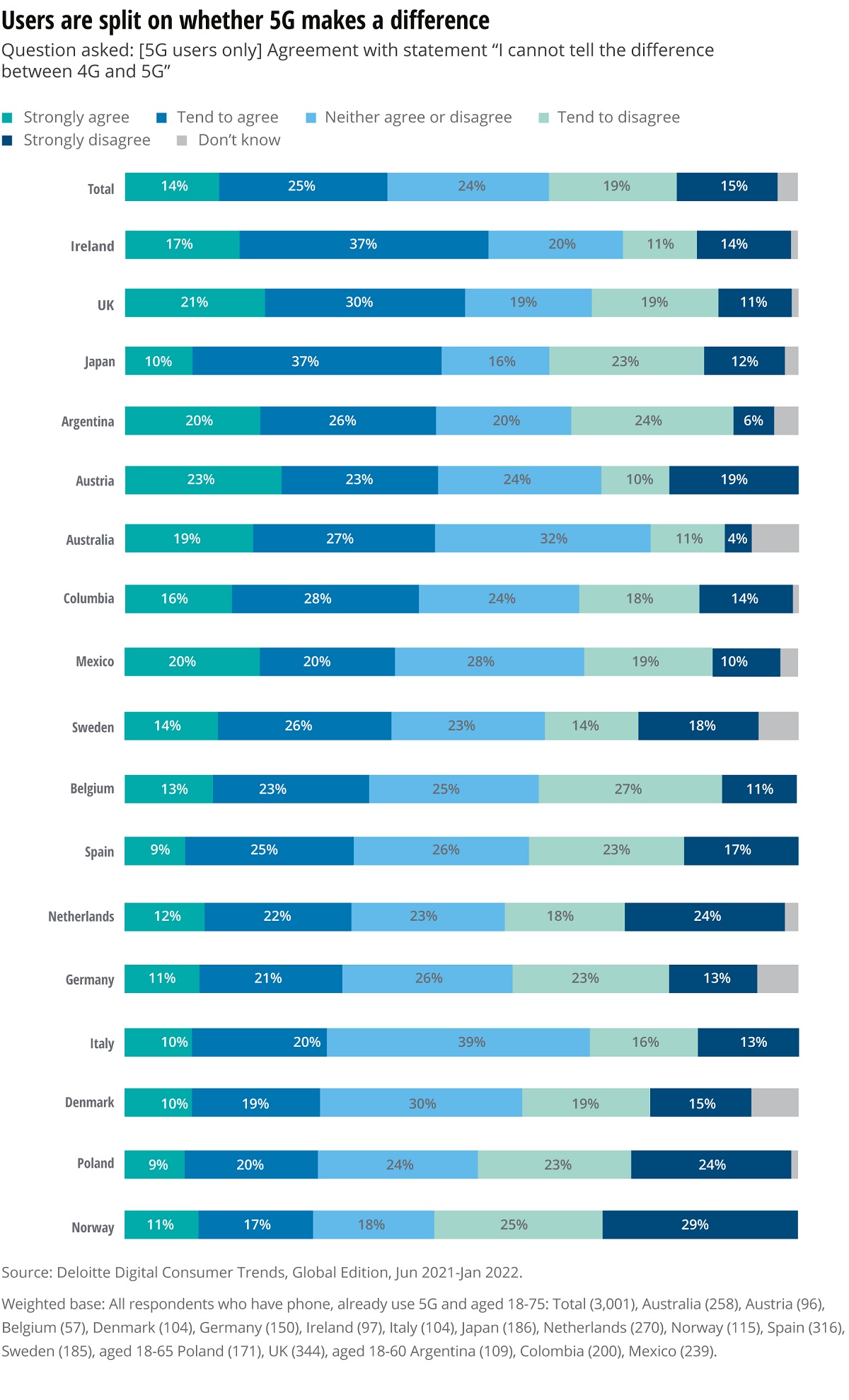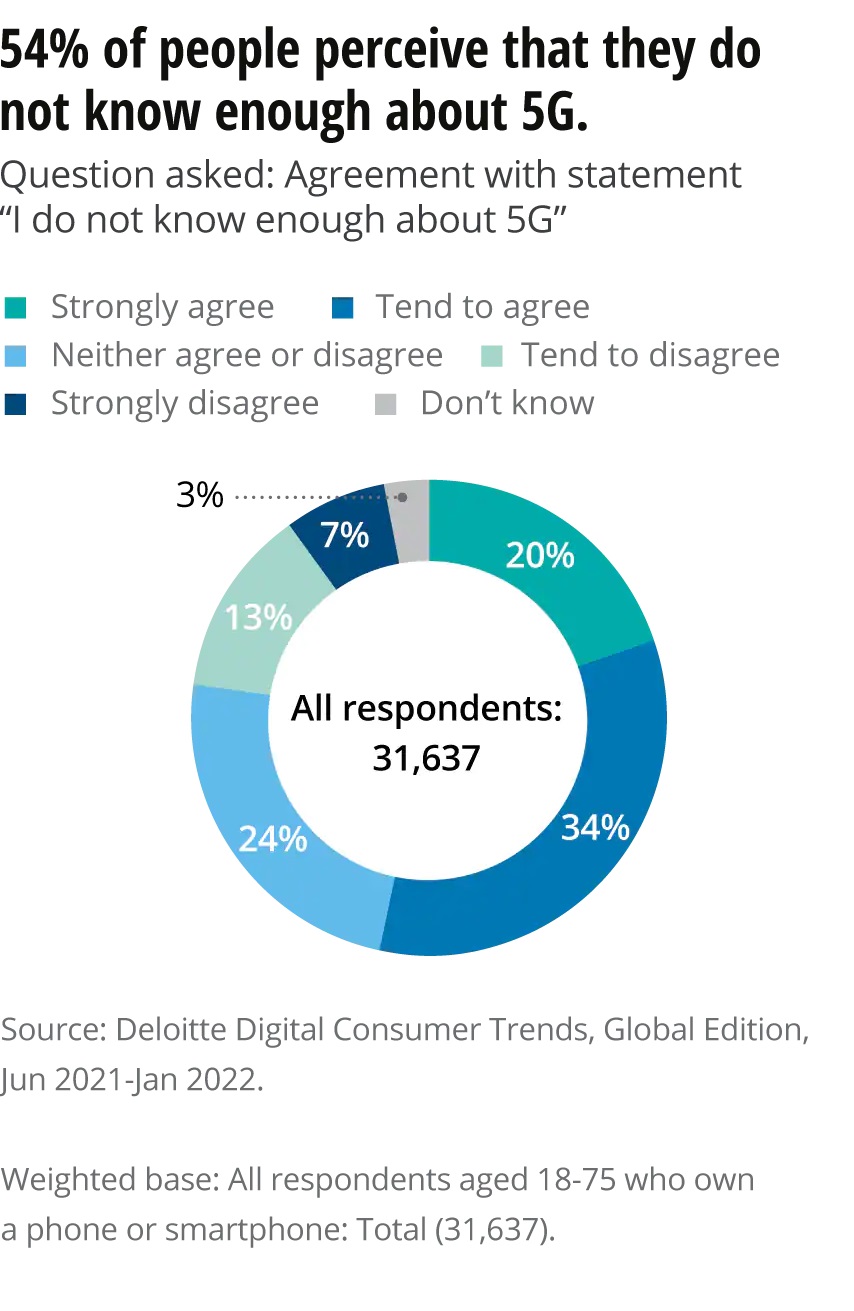
READ MORE: 5G adoption is inevitable. It is time to focus on experience. (Deloitte)
Consumers are indifferent to 5G, understanding that, in a few years, 5G will come baked into the latest handset anyway. It’s not that indifference implies rejection of the new format; it’s just that this is how we all factor in upgrades.
“[Consumers] expect their replacement devices to boast faster processors than the machines they replace. And they expect services — whether a bus ride, shopping trip, cinema or mobile network — to feature more and better technology,” says Deloitte, publishing a survey of smartphone buying habits and found 5G on a slow road to inevitable adoption.

Deloitte’s research, based on a poll of 31,600 respondents in 18 countries, suggests that consumers appear indifferent to 5G. Proactive upgrading to a 5G network is not a priority for them.
The majority of respondents (55%) expect “better network connectivity (faster, more reliable) on 5G.” However, if their current network satisfies their current needs, there may be little incentive to proactively seek out an upgrade.

This indifference will likely remain until sufficient bandwidth-hungry applications emerge. For example, streaming 4K video would require significantly higher bit rates, of up to 50 Mbit/s. While this speed could be delivered by 4G, 5G would offer much more capacity.
“But for most [consumers] there is little urgency,” Deloitte reports. “They are most likely to upgrade passively.”
Globally, as of December 2021, 80 countries had commercially available 5G networks online, with another 37 countries either investing in trials or otherwise planning to launch 5G technology, according to a report from InterDigital. More than 190 mobile network operators now have 5G services available commercially.
WAIT, WE’RE ALREADY TALKING ABOUT 6G? WHAT ABOUT 5G?
6G may already be on the horizon, but there’s still a lot to understand about the benefits — and limitations — of 5G, which is rolling out across the US but has yet to reach peak saturation. Dive into these selections from the NAB Amplify archives to learn what, exactly, 5G is, how it differs from 4G, and — most importantly — how 5G will bolster the Media & Entertainment industry on the road ahead:
- Why 5G is the Cool Thing That Still Hasn’t Happened
- 5G Starts to Fulfill Its Economic Promise
- Why Is 5G Advanced So Important to 5G Adoption?
- 5G Technology Goes Way Beyond Better Cellphone Service
- 6G Mobile Networks Begin to Take Shape… With 7G Already in the Wings
It will become increasingly hard to find smartphones that do not support 5G. By the fourth quarter of 2021, almost half (49%) of smartphones shipped were already 5G capable.
The majority of cellular users will be connecting to 5G networks by the end of 2023 — by which time analysts expect the first $100 5G smartphones to be on the market in some parts of the world.
As it stands, though, without any “killer app” to excite the buyer, 5G is not in and of itself enough of a reason to purchase.

According to the research, only 9% of respondents ranked 5G as the most important feature of a smartphone. Nine other attributes were of greater importance including battery life, storage capacity, screen size and ease of use.
“For most people, 5G does not need to be a life-changing revolution right now,” concludes Deloitte. “People will adopt it regardless, because it is new, and it will be frictionless to do so. It is inevitable, and that in large measure explains the indifference.”
These findings chime with the recent InterDigital report which was adamant that 5G networks will become commonplace within the next five years to improve all video applications running over it.
READ MORE: The Possibilities of “Only on 5G” Experiences (NAB Amplify)
But faster speed and seamless connectivity are priced-in by consumers. These attributes are expected. Therefore, it is up to the entertainment business and the telcos to identify applications that happen “only on 5G” to really sell the much-heralded value of the technology into consumer consciousness.


